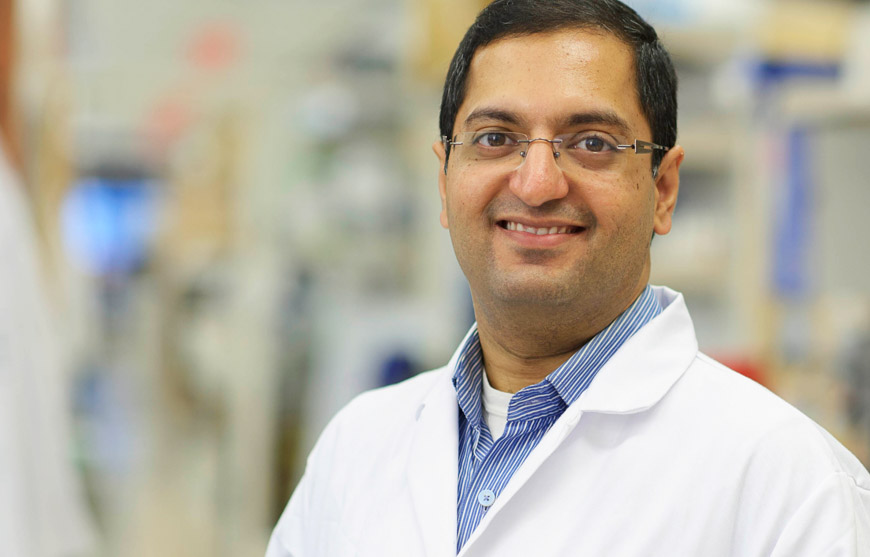It’s no surprise that our blood is important. The cargo it transports—nutrients, infection-fighting cells, clotting factors, waste and more—keeps our body healthy and running smoothly. So when blood cells don’t form properly, serious cancers can occur.
Scientists divide blood cancers into three broad categories—leukemia, lymphoma and myeloma—based on the cell type affected. Leukemias disrupt white blood cell production; lymphomas affect the lymphatic system, which removes extra fluid from the body; and myelomas affect plasma cells, which produce intruder-fighting antibodies. There are many subsets within each category.
In honor of Blood Cancer Awareness Month, we spoke with Sanford Burnham Prebys Medical Discovery Institute scientist Ani Deshpande, PhD, to learn more about the blood cancer he studies: acute myeloid leukemia (AML). Of the 60,000 American children and adults diagnosed with leukemias each year, nearly 30 percent will have AML.
- Most patients receive the same treatment used nearly five decades ago. Drug developers have created medicines for AML patients who have certain changes in their DNA, called mutations. But the majority of AML patients receive the treatments used in the ’70s: chemotherapy, radiation and possibly a bone marrow transplant. This isn’t last-decade science; it’s last-century science.
- It’s deadly. The five-year survival rate for adults with AML—the number of people who are alive five years after diagnosis—is only 24 percent, according to the American Cancer Society. New medicines and treatment approaches are urgently needed.
- Sequencing is making strides. Now, scientists can sequence patients’ genomes to learn the underlying mutation driving their cancer. This technology has advanced our understanding to the point that about 60 to 70 percent of the time, their doctor knows the mutation involved. Our new problem is that we don’t have effective medicines that target most of these mutations.
- Speaking of sequencing. Because of DNA sequencing, we also know that a large fraction of the mutations in AML are epigenetic changes—alterations that affect which genes turn on but don’t change the DNA itself.
To better understand how epigenetic changes work, imagine a cookbook. If recipes are DNA, then epigenetic changes are bookmarks. These bookmarks signal whether the recipe should be made or not, without altering the underlying text of the recipe.
Our laboratory is studying the epigenetic changes that drive AML. Our hope is that once we identify these changes, we can create drugs that restore the epigenome to its normal state.
- There is hope. After nearly 50 years of little progress, four new drugs have been approved for AML over the last 18 months. And there are currently more than 330 clinical trials enrolling patients in the U.S., so more treatments may soon follow.
Resources:
- American Society of Hematology: Blood basics
- American Cancer Society: What is Acute Myeloid Leukemia?
Interested in keeping up with Sanford Burnham Prebys’ latest discoveries, upcoming events and more? Subscribe to our monthly newsletter, Discoveries.
